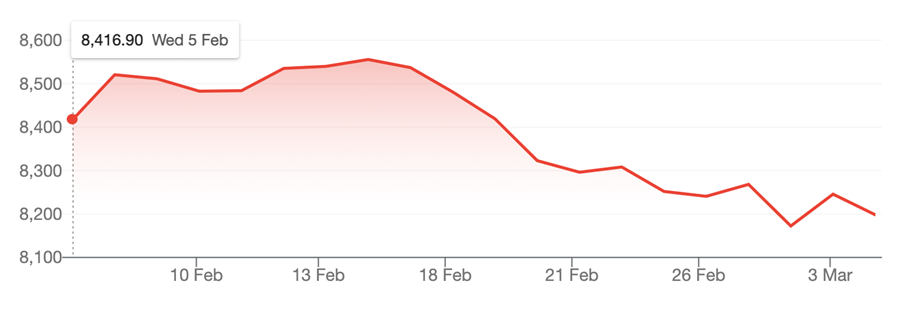

It was always going to happen and it’s now in train! China, Canada and Mexico are returning fire on the Trump tariffs with tariffs of their own on US goods. Not surprisingly, Wall Street hasn’t liked these retaliations by the second biggest global economy and the USA’s two biggest trading partners — Mexico and Canada.
Of course, President Trump doesn’t see them as partners but more like users, which is why he has hounded them, first vocally and now with 25% tariffs on Mexico and Canada, and a 20% levy on Chinese goods, which was only 10% a month ago!
Analysing these developments, the guardian.com team calculates that all up US$918 billion worth of US goods going to Mexico and Canada will be slugged. Canada is opting for a 25% tariff to match the US ones, while Mexico is planning both tariffs and non-tariff measures, which will punish US businesses exporting their goods to the southern neighbour.
China is slamming tariffs on agricultural products from the US. This is how The Guardian explained the planned Chinese impost on American farmers: “Its finance ministry said additional 15% tariffs would be imposed on chicken, wheat, corn and cotton, with further 10% tariffs on sorghum, soya beans, pork, beef, aquatic products, fruits, vegetables and dairy products. It has also raised additional complaints against the US with the World Trade Organization.”
Unsurprisingly, Wall Street, which has cheered the arrival of Donald Trump back in the White House, is not happy with this reaction from the US’s trading partners.
Ahead of the close, the Dow Jones index was off close to 500 points (or over 1%), while the S&P 500 index was down 0.87%. Meanwhile, the tech-heavy Nasdaq is down 8.7% since February 19, when the Trump tariff tirades started. If this index drops 10% or more, we call that a correction. The magnitude of this sell-off is primarily a Trump-creation and Wall Street will be hoping that the US President had expected this reaction and has a B-plan to sooth the concerns of Wall Street and all global stock markets that take their lead from the Big Apple’s stock market indexes.
Over the past month our market is down 2.6% but we look vulnerable to further sell-offs while this trade war escalates.
S&P/ASX 200 Index

Looking at the blowback for us overnight, the SPI futures that predicts how our stock market will open, says to expect a 70-point fall at the start of trading today. Also, the Oz dollar is under pressure with the currency down to 62.20 US cents. Falls generally happen when economic circumstances threaten global trade, because we’re a big trading nation, having huge resources and a small population.
In case you’re not an expert on Donald Trump and his methods, his tariffs are meant to show he means business. Other countries, including Australia, could soon face what he calls reciprocal tariffs for protective measures that work against US producers.
This trade war is set to hot up because no one looks to be in a conciliatory or negotiating mood, which is bound to sustain the uncertainty for markets. However, an important point needs to be made.
Jun Beil Liu of TenCap made the point on my TV show on Monday that the actual economic impacts of these tariffs are small, so some sell-offs of stocks is bound to create a buying opportunity after a week or two of high anxiety.
We also could see more interest rate cuts if the tariffs are seen as a brake on global economic growth. And then there is the Artificial Intelligence impact on company profits, which along with Trump’s promises of lower taxes and less regulation are bound to bring share buyers back to stock markets.
I always tipped that a sell-off linked to tariff dramas was on the cards, but I also predicted that the actual magnitude of the negativity for stocks could be smaller than many might think.
In a nutshell, I’m arguing short-term pain before long-term gain.